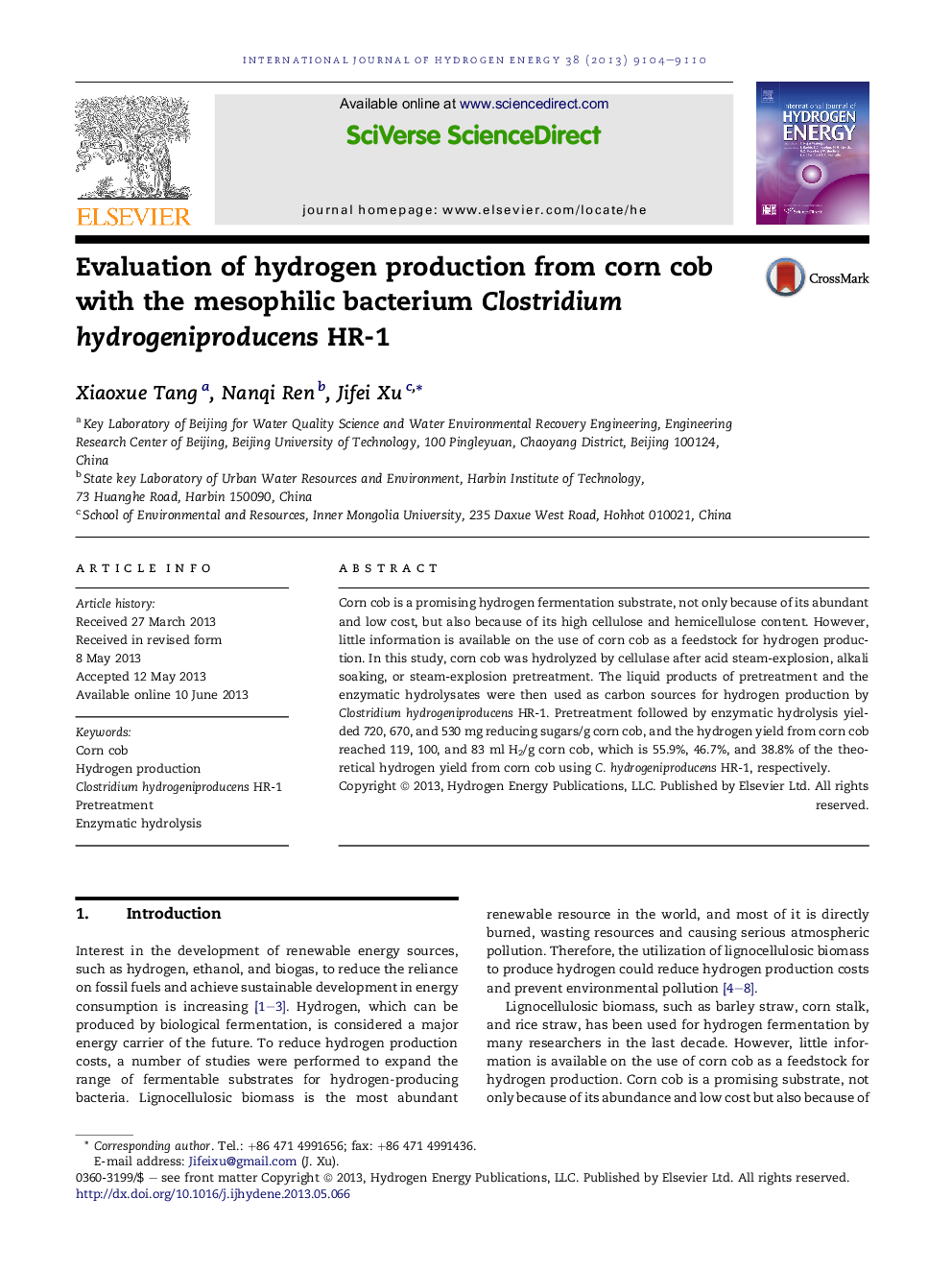| Article ID | Journal | Published Year | Pages | File Type |
|---|---|---|---|---|
| 7722302 | International Journal of Hydrogen Energy | 2013 | 7 Pages |
Abstract
Corn cob is a promising hydrogen fermentation substrate, not only because of its abundant and low cost, but also because of its high cellulose and hemicellulose content. However, little information is available on the use of corn cob as a feedstock for hydrogen production. In this study, corn cob was hydrolyzed by cellulase after acid steam-explosion, alkali soaking, or steam-explosion pretreatment. The liquid products of pretreatment and the enzymatic hydrolysates were then used as carbon sources for hydrogen production by Clostridium hydrogeniproducens HR-1. Pretreatment followed by enzymatic hydrolysis yielded 720, 670, and 530Â mg reducing sugars/g corn cob, and the hydrogen yield from corn cob reached 119, 100, and 83Â ml H2/g corn cob, which is 55.9%, 46.7%, and 38.8% of the theoretical hydrogen yield from corn cob using C. hydrogeniproducens HR-1, respectively.
Related Topics
Physical Sciences and Engineering
Chemistry
Electrochemistry
Authors
Xiaoxue Tang, Nanqi Ren, Jifei Xu,
